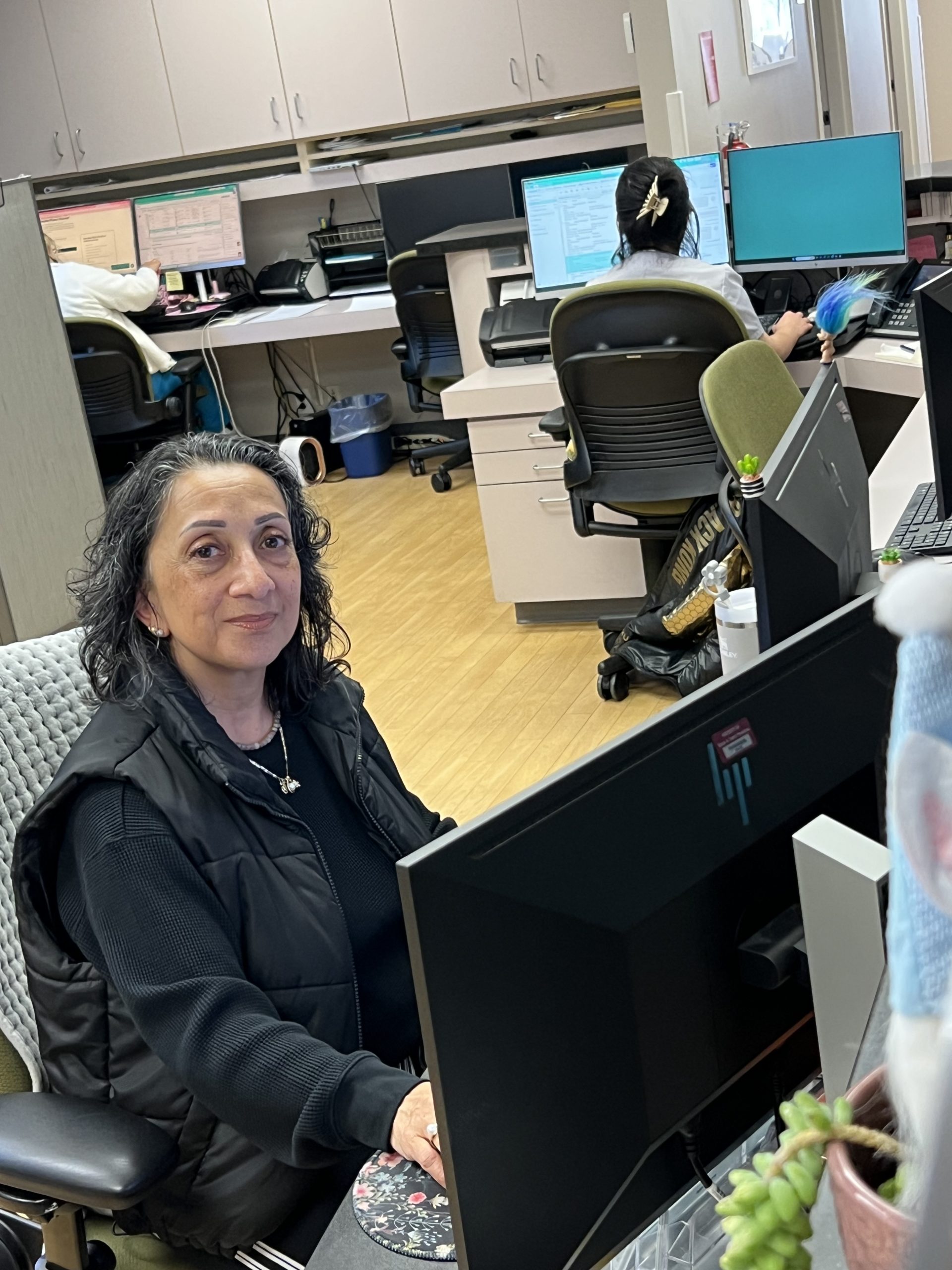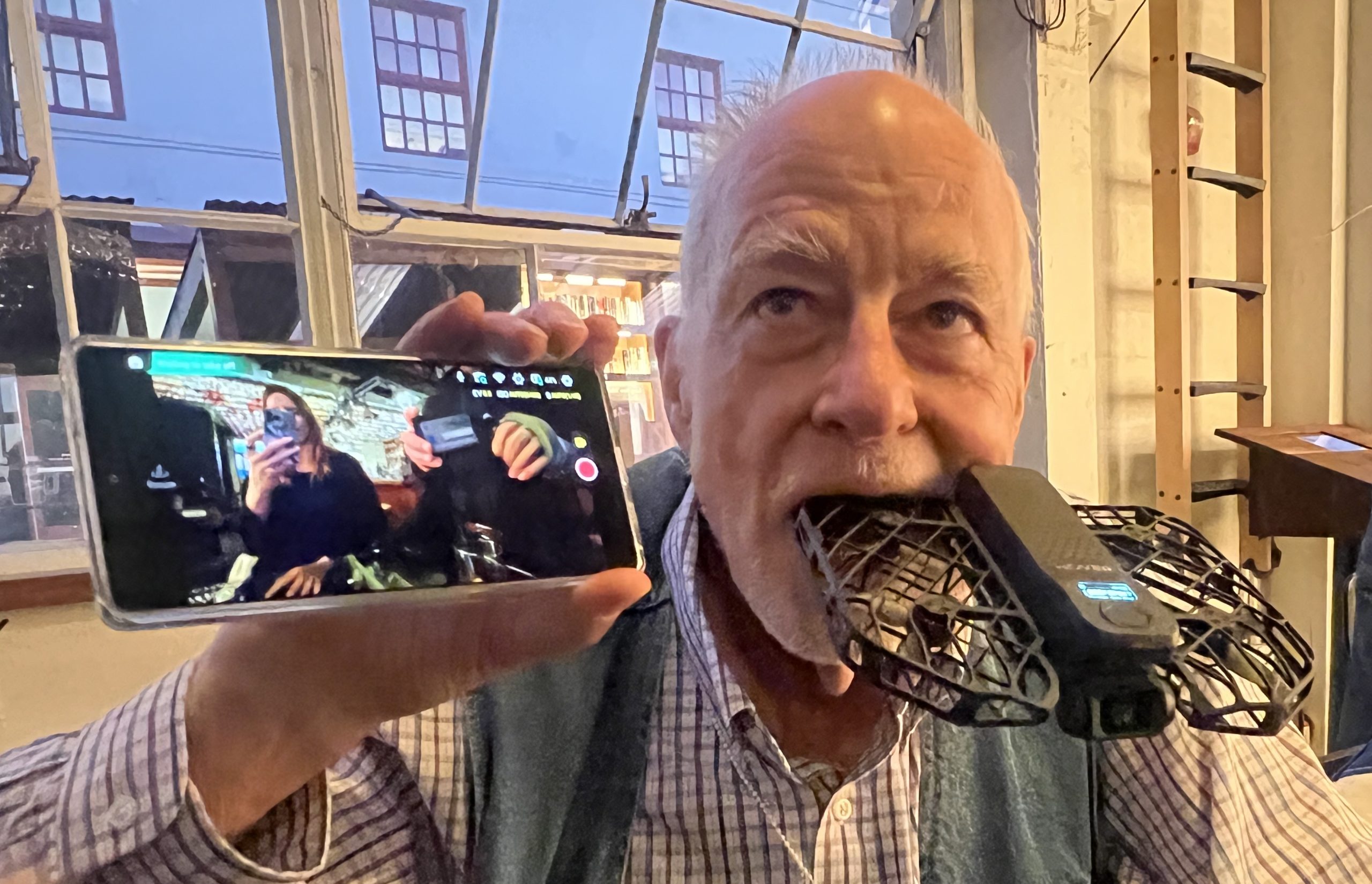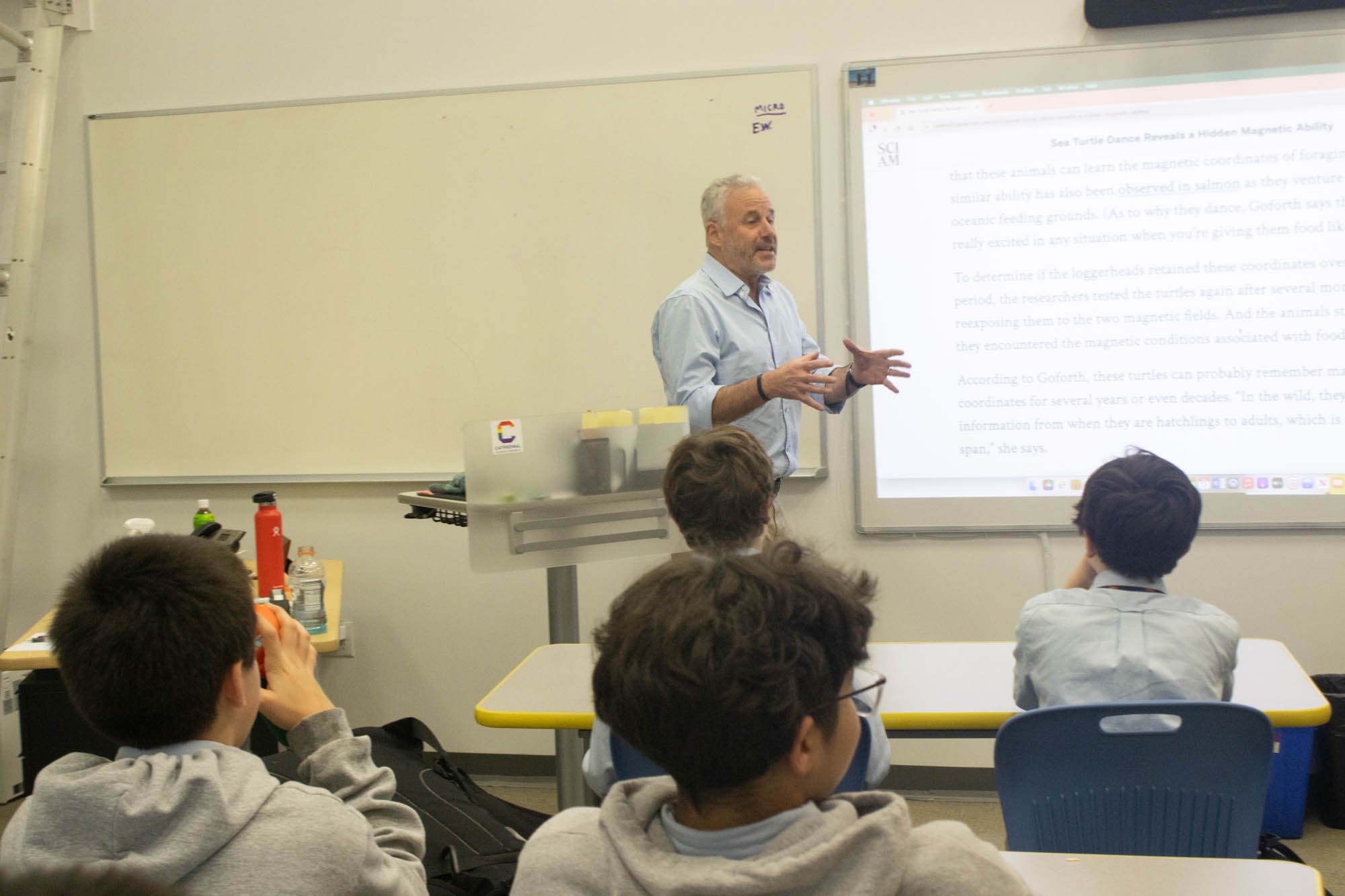‘Mayor’ of Tenderloin turned his troubles into blessings for the neighborhood
Del Seymour has seen the Tenderloin from the bottom as a street addict and later from the top, as executive director of Code Tenderloin, a jobs program for neighborhood residents, and as co-chair of the city’s homeless coordinating board.
“I like the position I’m in now, but I learned how to help others from my experiences,” said Seymour, now 72.
Moving to the Tenderloin in his mid-40s, Seymour spiraled down into drug addiction. “I continued to work at legitimate jobs for most of my time on drugs, but I also bought and sold drugs. My habit was $200 to $300 a day.” Seymour was in and out of jail and chronically homeless while he was using.
Then, at age 62, Seymour got clean.
He spent the next three years overcoming drug addiction. “You’re still a full-blown drug addict until you don’t want it or need it anymore. Those years were miserable, but during that time I also started to re-build my life.”
In 2010, Seymour started Tenderloin Walking Tours. “There’s a rich history here. I show what’s vibrant in a neighborhood that’s considered ‘gritty’ and ‘seedy.’”
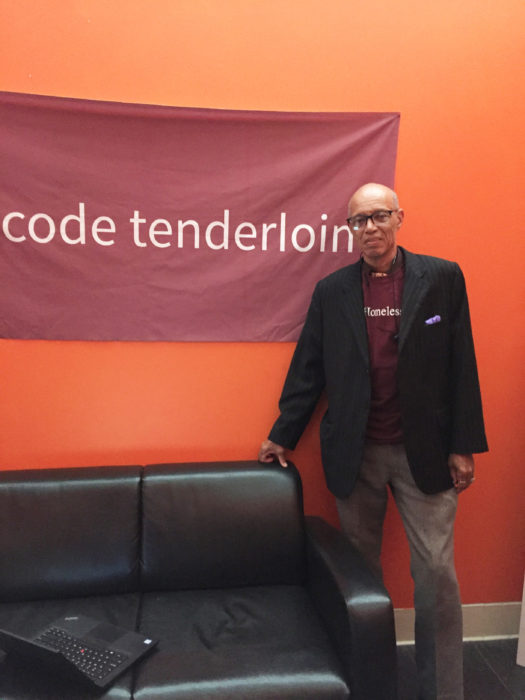
Three years later, he started Code Tenderloin, which also provides emotional, financial and legal support to get people up and working.
Seymour’s ability to get clean 10 years ago was the result of meeting San Francisco native Walter Hughes, a financial consultant and an elder at the San Francisco Christian Center in the Tenderloin. Hughes ran across Seymour while doing outreach at a neighborhood park. He gave Seymour a suit and a business card and invited him to church that Sunday.
Seymour didn’t think too much about going to the church at the time. “It was something to do, something different.” He was attracted to Hughes because of his persona. “I liked the way he was helping people and the benefits he had. And I didn’t want to disappoint him.”
Seymour went that Sunday and Hughes got him a place to live in the Tenderloin. The church paid his rent until he could get housing through the Veterans Administration.
Hughes went on to become his mentor. Today, he’s on Code Tenderloin’s board of directors and a close friend. “I talk with him every day.”
To get off drugs, Seymour chose a model of recovery at Glide, a spiritual community, social justice movement and social service provider in the Tenderloin. Unlike Alcoholics Anonymous, the program resists labels. “In traditional AA, you say, ‘I’m Del and I’m an addict.’ That’s done. It makes it easier to go back out.”
The past is the past
In Seymour’s program, the past is the past, he said. It’s “I’m Del and I’m not an addict. I used to be, but I’m damn sure I’m not an addict now.”
In Seymour’s last days of homelessness and substance abuse, he drove a cab. “I enjoyed being a tour guide and earned big tips.” One day, he got three parking tickets. “That killed my insurance, so I started thinking what I could do that would be like telling people about the city but without a car?” That’s when he got the idea for Tenderloin Walking Tours.
Because Seymour had lived in Tenderloin for almost two decades, he knew the neighborhood inside and out. He knew all the hotel workers, service people, restaurant and store owners. “I love San Francisco history.” He took to going to the library everyday to read the archives.
“I started with one or two people and word got around.” Naturally gregarious, when Seymour got his mojo back, he applied his energies just like he did when he was a kid growing up in Chicago. “Everyone learned you had to have a (legal) hustle to survive.”
Seymour learned early on that no one asked for anything. “You got your own.” In the winter he shoveled snow and kept a battery charged so he could jump start people’s cars. “I had a morning and evening paper route.” When he was a teenager, he sold used cars.
That’s made overcoming obstacles somewhat easier. “Things don’t challenge me as much as other people, because I had all those challenges as a youth. Nothing’s a big deal.”
What’s good about the Tenderloin
Seymour created Walking Tours from nothing and nine years later, it’s still in business. “I tell people how the Tenderloin played a part in the LGBTQ movement, in the legendary jazz scene and as a theater locale.”
He started with a 90-minute tour and has since added the TenderNob Pub Crawl, which is mentioned in “Lonely Planet,” as well as group tours for schools, nonprofits and tech companies. There’s a discount for groups of 10. Sign-ups are online.
As Seymour was conducting his tours and meeting more and more people, locals described him as “the brother that brought white folks into the neighborhood.” He used that platform as entrée into the tech world. “The tech companies weren’t integrating with the neighborhood as far as job development, recruitment and placement and so I challenged them.”
“It takes patience. But, I’m from Chicago. You can’t tell me ‘No.’” Seymour was determined that the tech companies weren’t going to cast aspirations on the people in his neighborhood and do nothing to help them. He met with CEOS, telling them of his plans to start a job assistance program, and encouraged their participation.
Today, Code Tenderloin is funded by the Mayor’s Office of Economic and Workforce Development, with additional funding from foundations and tech companies such as Dolby, Twitter and Microsoft. LinkedIn, Uber and Salesforce provide classroom space and teaching instruction. Code Tenderloin’s office is at 55 Taylor St. with additional classroom space across the street at PianoFight, 144 Taylor St., an entertainment venue.
Seymour chose the name Code Tenderloin for his company as a play on hospital language, code blue for flatlining. “Our African American population is facing a 68 percent unemployment rate. That’s code…We’re dying.”
Code Tenderloin prepares participants to succeed in the workplace with a curriculum that covers technical skills, soft skills such as learning the culture of the workplace, interview preparation, resumé creation, one-on-one mentorship and off-site programs led by some of the best tech companies in the Bay Area. It boasts an 87 percent placement rate.
Support increases resilience
Part of Code Tenderloin’s work is removing barriers to learning. Donna Hilliard, director of operations, related the story of Diana, a 23-year-old with two children who was living in her car. “We first helped her secure housing in a Navigation Center so she could get started with her learning, and we figured out a way she could learn while still working and arranging childcare.” Hilliard said that when people get the support they need, their resilience increases dramatically.
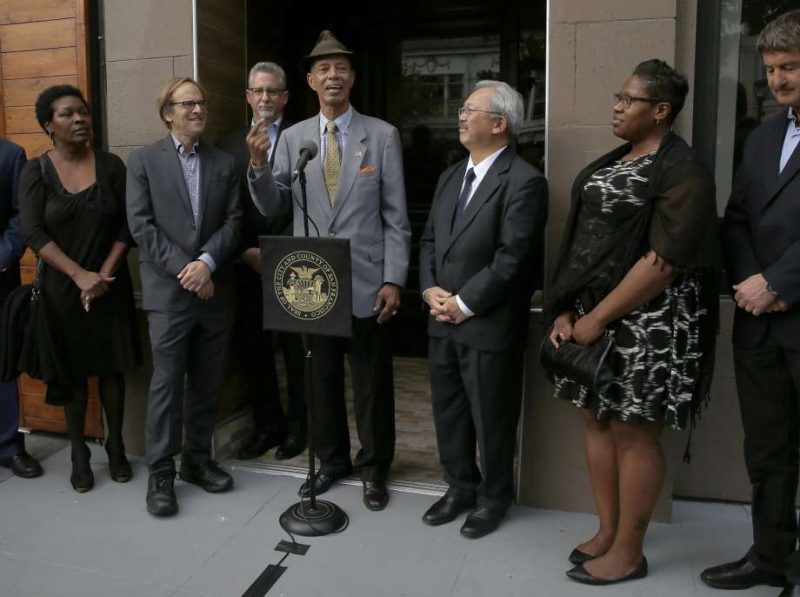
Code Tenderloin has five paid staff – all program alumni – and 100 volunteers. “I just hired one of my students as a job readiness teacher. If I don’t hire my own, how can I ask you to?” Seymour said.
Seymour has been on the coordinating board for the city’s Department of Homelessness and Supportive Housing since 2014, a volunteer position that takes him back and forth to Washington, D.C. – expenses paid by the city – to work with mayors to mitigate homelessness.
Nicknamed “Mayor of the Tenderloin” for his contributions, Seymour acted in Mayor Lee’s stead when he visited the White House in November 2016 with 35 mayors from around the country, to discuss how to help homeless veterans. He met Michelle Obama. “We’re both ‘Southies’ from Chicago.”
Because of his service in Cambodia during the Vietnam War, from ages 19 to 21, Seymour is hopeful he can arrange a retirement plan for himself with the VA by age 75.
What Seymour has learned from his time as a drug addict is what he teaches people who questions whether they have a problem: “There is no such thing as recreational drug use.”
He is grateful he got clean. “As a result, I have wonderful relationships with my three children today.”


